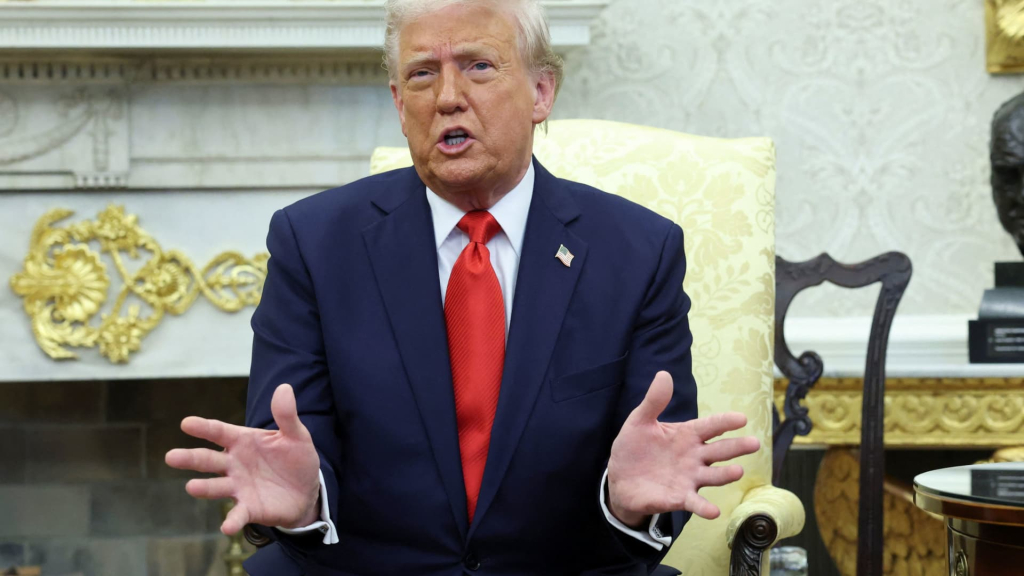Major Wall Street banks have recorded their highest stock trading revenues to date, driven by significant market shifts following the inception of President Donald Trump’s administration. These changes have prompted institutional investors worldwide to recalibrate their strategies to adapt to the new political landscape.
Top financial institutions, including Goldman Sachs, Morgan Stanley, JPMorgan Chase, and Bank of America all reported record high revenues from equities trading in the first quarter, with each generating approximately $4 billion in earnings.
In total, when factoring in results from Citigroup and Wells Fargo, the six largest U.S. banks collectively earned $16.3 billion from stock trading in the quarter, marking a 33% increase from the same period last year. This performance surpassed figures from previous volatility periods, such as the 2020 coronavirus outbreak and the 2008 financial meltdown.
The results contributed to a generally positive performance across the banks, with all but Wells Fargo exceeding analysts’ expectations. Financial analysts have characterized the outcomes as “spectacular,” “extraordinary,” and “awesome” during recent conference calls.
The spike in revenues flips the narrative on what was expected to be a period of immense opportunity for Wall Street’s dealmakers. While an increase in mergers and acquisitions was anticipated under Trump’s leadership, actual deal-making activity has remained subdued, placing trading operations at the forefront of Wall Street’s successes.
Equity traders achieved the most significant gains in the first quarter, but fixed income teams also witnessed a boost due to heightened trading in currencies, commodities, and bond markets.
“As long as market volatility persists — and there’s little indication that it will diminish soon — equities trading desks can expect to remain active,” remarked bank analyst James Shanahan during a phone interview.
While investment banking remains lackluster due to corporate leaders delaying strategic decisions amid prevailing uncertainty, professional investors see substantial opportunities for profit, as highlighted by Morgan Stanley CEO Ted Pick on Friday.
The surge in trading revenue will assist major banks in allocating reserves for potential bad loans as economic conditions continue to weaken. JPMorgan executives have indicated their projections include a rise in U.S. unemployment to 5.8% later this year, an increase from the March rate of 4.2%, according to Labor Department data.
This scenario creates challenges for regional banks, which lack large trading divisions and face stagnant loan growth and increasing borrower defaults, posing a difficult situation, according to Shanahan.
‘Significant moves’
The first quarter is typically a busy time for trading as investors at hedge funds, pension funds, and other active managers initiate their performance cycles again.
This year was no exception: mere hours after Trump’s inauguration in January, he announced upcoming tariffs on imports from Canada and Mexico. The following month marked an escalation of trade tensions with China, targeting specific industries and products like automobiles and steel.
As these developments unfolded, the market responded vigorously, particularly by early April during Trump’s “Liberation Day” announcements. This spurred drastic movements within the market, with both equities and government bonds experiencing significant volatility.
Such heightened trading activity could pave the way for even more profitable outcomes for Wall Street in the second quarter compared to the first. “We saw substantial shifts in equity markets as investors adjusted for a new type of trade policy in March, leading to heightened activity for us in a variety of ways,” observed Goldman CEO David Solomon during a call with analysts on Monday.
Looking ahead, Solomon noted that the second quarter has begun strongly, with clients actively engaging in the market.
The landscape of Wall Street has transformed since the 2008 financial crisis, which resulted in a consolidation of trading and investment banking among a handful of larger institutions after the collapse of Lehman Brothers and Bear Stearns.
With leadership from executives like Morgan Stanley’s Pick, who has played a pivotal role in revitalizing the firm’s fixed income and equities businesses, the dominant trading desks on Wall Street are delivering increasingly rapid execution and larger credit lines to professional investors globally.
Rather than taking speculative risks with their own capital, these firms are focusing on facilitating trades and providing leverage, which allows them to profit from trading volume regardless of market direction.
“We’ve been proactively engaging with clients,” Pick stated on Friday. “Despite concerns about potential economic developments, our market-making and transaction capabilities have remained orderly as clients adjust their leverage levels.”


























